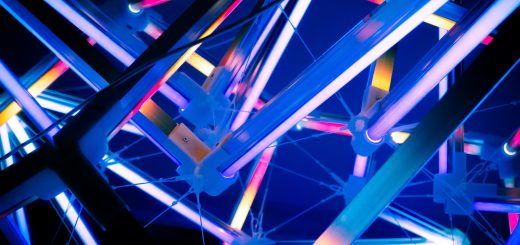Why Do Penguins Waddle When They Walk?

Looking for more amazing products? Check out our online store and explore our collection here! Happy shopping!
Before diving in, please note: This post is for informational purposes only. If you’d like to know more about how we approach topics, feel free to check out our friendly Disclaimer Page.
Hey there, amazing readers! 
We’re committed to delivering quality posts, and your support (even just sticking around despite the ads) means everything to us. So, bear with us, and thanks for helping us keep the good vibes rolling. Now, on to the fun stuff!
TRANSLATE BUTTON AT THE END OF THE ARTICLE
A Quick Overview
Have you ever paused to watch a penguin move?
Those little tuxedoed creatures certainly know how to steal the show with their adorable waddling.
But have you ever wondered why they waddle in the first place?
In this cheerful exploration, we’ll delve into the fascinating reasons behind this charming movement.
From their unique anatomy to their evolutionary adaptations, join me on this journey to understand what makes the penguin’s waddle so special.
Understanding the Adorable Penguin Waddle Phenomenon
When you spot a penguin waddling, it’s hard not to smile.
They exhibit a distinctive gait that seems to embody a carefree spirit.
But there’s more to this waddle than meets the eye.
Penguins are flightless birds, which means they adapted their movements for a different kind of lifestyle.
Waddling helps penguins maintain balance and stability on land.
Their bodies are designed for efficient swimming, which means their leg structure is quite different from that of flying birds.
This unique walking style allows them to conserve energy while moving in their chilly habitats.
Imagine taking a stroll on a slippery surface; penguins have mastered the art of staying upright despite the icy conditions.
Another key aspect of their waddle is its efficiency.
Penguins waddle to minimize the risk of falling, especially on ice.
Their movement is a playful reminder of how nature provides solutions tailored to specific environments.
The waddle may look funny, but it’s a clever adaptation to their life in the frigid waters and icy landscapes.
The Anatomy of a Penguin: Why They Waddle
Let’s take a closer look at the anatomy of these charming birds.
Penguins have short, sturdy legs positioned towards the back of their bodies.
This design might seem odd, but it serves a purpose.
The backward placement of their legs helps them maintain balance, particularly in water.
While swimming, their legs are tucked closely to their bodies, allowing them to move swiftly and gracefully.
Their bodies are relatively heavy, with a thick layer of blubber providing insulation against the cold.
This extra weight can make waddling seem cumbersome, but it actually helps them maintain stability.
The waddling motion shifts their center of gravity, which keeps them from toppling over, even on slippery surfaces.
Interestingly, their feet are webbed and flat, which enhances their ability to swim but does not contribute much to their land movement.
The combination of their anatomy—short legs, heavy bodies, and flat feet—results in that delightful waddle we all love to see.
It’s a visual reminder of how evolution shapes the way animals adapt to their surroundings.
Evolutionary Reasons Behind Penguin Walking Styles
Waddling isn’t just a cute quirk; it’s a result of millions of years of evolution.
Discover "Dog Care: Learning How to Care for Your Furry Friend
"
Penguins evolved in harsh environments where agility on land is not as critical as it is for other birds.
Their ancestors were likely more adept at flying, but as they adapted to a life in the water, their bodies underwent significant changes.
Over time, penguins lost the ability to fly, but they gained incredible swimming skills.
Their waddle is a byproduct of their evolutionary path.
It helps them navigate rocky terrains and icy surfaces where speed isn’t as important as stability.
This waddling gait allows them to conserve energy, making it a practical adaptation for their environment.
In essence, their waddling can be viewed as an evolutionary trade-off.
They may not glide effortlessly through the air, but they dominate the aquatic world and have adapted perfectly for life in extreme conditions.
Isn’t it amazing how evolution shapes even the simplest of movements?
How Fat Distribution Influences Penguin Movement
One of the most intriguing aspects of a penguin’s waddle is how fat distribution plays a role in their movement.
Penguins have a thick layer of blubber that insulates them against freezing temperatures.
This fat, while vital for survival, also adds to their weight.
The distribution of this fat is crucial.
It centers around their torso, giving them a rounded appearance.
This shape, combined with their short legs, means that their center of gravity is lower.
As penguins walk, this lower center helps them maintain their balance, making waddling a natural and efficient way for them to move across the ice.
Moreover, the extra weight from the blubber provides stability and helps reduce the chances of slipping.
When you watch a penguin waddle, you might be witnessing an intricate balance of nature’s design that caters to survival in their icy homes.
The Role of Short Legs in a Penguin’s Waddle
Penguins’ short legs are key players in their unique walking style.
These legs may seem like a disadvantage for walking, but they are perfectly suited for their lifestyle.
Being short and stout, they help penguins maintain a low center of gravity, which is essential for balance.
When a penguin waddles, its legs move in a way that allows them to keep their body upright.
This is especially important on slippery surfaces where falling could be hazardous.
The short length of their legs means they can take small, controlled steps that reduce the risk of slipping.
Additionally, their legs are strong enough to support their body weight, allowing for that characteristic bobbing motion.
So, next time you see a penguin waddling, remember that those short legs are working hard to keep them stable and upright.
Waddling: A Smart Strategy for Penguin Survival
Waddling is not just cute; it’s a clever survival strategy.
In the harsh environments where penguins live, survival requires adaptations that might seem odd to us.
Waddling helps penguins conserve energy, which is crucial when food is scarce.
By moving in this way, penguins can traverse long distances without exhausting themselves.
This energy efficiency becomes even more vital during breeding season when they have to travel to find food and return to their nests.
Moreover, waddling allows them to maintain a strong grip on the icy ground.
Their unique gait decreases the likelihood of slipping, which is essential in environments where falling could result in injury or vulnerability to predators.
Waddling is a practical trait that enhances their chances of survival in the wild.
Comparing Penguin Waddles: Different Species, Different Styles
Did you know that not all penguins waddle the same way?
Different species exhibit unique waddling styles.
For instance, the Emperor Penguin, the largest of all penguin species, has a more pronounced waddle due to its size.
It moves in a regal manner, gliding gracefully across the ice.
In contrast, the smaller Adélie Penguin has a quicker, more energetic waddle.
These differences arise from variations in size, weight, and leg length.
The Gentoo Penguin, known for its speed in the water, also displays a quick-footed waddle on land.
Observing these differences can be entertaining.
It highlights how species have adapted their movements based on their specific environments and lifestyles.
Next time you’re at a zoo or watching wildlife documentaries, see if you can spot these different waddles!
Penguins on Land vs. Penguins in Water: A Contrast
When we think of penguins, we often imagine them diving gracefully into the ocean.
But there’s a stark contrast between their movements on land versus in water.
While waddling is their primary mode of transport on solid ground, their swimming style is a marvel to behold.
In water, penguins are incredibly agile.
Their bodies are streamlined, and their wings have evolved into flippers that allow them to propel themselves with remarkable speed and precision.
They can twist and turn effortlessly, a stark contrast to the waddling motion we see on land.
Interestingly, their waddling gait helps them transition from water to land.
As they climb out of the ocean, they often need to pull themselves onto the ice.
This requires a combination of their swimming skills and their waddling ability.
Witnessing this transition is a beautiful reminder of how these birds have adapted to thrive in both environments.
How Waddling Helps Penguins Maintain Balance
Waddling is not just a cute quirk; it serves a functional purpose.
Penguins are prone to slipping on icy surfaces, and their waddling motion mitigates that risk.
By shifting their weight from side to side, penguins maintain balance even on the trickiest of terrains.
Their waddling involves a rhythmic motion that allows them to adjust quickly to changes in surface conditions.
If the ice is uneven or covered in snow, that little wiggle helps them stay upright.
Penguins are masters of balance, and their waddle is a testament to that skill.
Moreover, this movement helps them interact with their environment.
Whether they’re avoiding obstacles or navigating through groups of fellow penguins, the waddling motion is an effective way to ensure they stay steady on their feet.
The Joy of Watching Penguins: Waddle and Play
If you’ve ever seen penguins in action, you know how delightful it is.
Their waddling, combined with their playful antics, creates an amusing spectacle.
Penguins often engage in various social behaviors, from sliding on their bellies to playfully bumping into one another.
These playful interactions add to their charm and showcase their personalities.
Watching a colony of penguins waddle together is like witnessing a well-rehearsed dance.
They bounce around, occasionally slipping, but always managing to right themselves.
This joyous display reminds us of the beauty of nature and the simple pleasures it offers.
The sight of a waddling penguin can light up anyone’s day, bringing a smile and a sense of wonder.
Penguins’ Waddling: An Iconic Aspect of Their Charm
The penguin’s waddle has become an iconic representation of these delightful birds.
It symbolizes their unique adaptations and the whimsical nature of their movements.
Their waddling gait has inspired countless cartoons, merchandise, and even memes!
This charming movement has led to a deep connection between penguins and humans.
People often associate the waddle with innocence and playfulness.
It’s hard not to feel a sense of joy when watching them move, making them beloved figures in popular culture.
Beyond their waddling, penguins embody resilience and adaptability, making them fascinating creatures.
Their waddling serves as a reminder of the wonders of evolution and the diverse ways life thrives on our planet.
Conclusion: Embracing the Waddle of These Cute Birds!
In summary, the penguin’s waddle is a delightful blend of biology, evolution, and charm.
From their unique anatomy to their clever adaptations for survival, every aspect of their movement tells a story of resilience in harsh environments.
As we admire these fascinating creatures, let’s celebrate the joy they bring through their waddling antics.
Next time you see a penguin, take a moment to appreciate the wonderful design of nature that allows them to thrive in their icy world.
And remember, sometimes, a little waddle can go a long way in brightening our day!

The Enlightenment Journey is a remarkable collection of writings authored by a distinguished group of experts in the fields of spirituality, new age, and esoteric knowledge.
This anthology features a diverse assembly of well-experienced authors who bring their profound insights and credible perspectives to the forefront.
Each contributor possesses a wealth of knowledge and wisdom, making them authorities in their respective domains.
Together, they offer readers a transformative journey into the realms of spiritual growth, self-discovery, and esoteric enlightenment.
The Enlightenment Journey is a testament to the collective expertise of these luminaries, providing readers with a rich tapestry of ideas and information to illuminate their spiritual path.
Our Diverse Expertise
While our primary focus is on spirituality and esotericism, we are equally passionate about exploring a wide range of other topics and niches 

To ensure we provide the most accurate and valuable insights, we collaborate with trusted experts in their respective domains 
Our blog originally focused on spirituality and metaphysics, but we’ve since expanded to cover a wide range of niches. Don’t worry—we continue to publish a lot of articles on spirituality! Frequently visit our blog to explore our diverse content and stay tuned for more insightful reads.
Hey there, amazing reader! 
Check out our store here and take a peek at some of our featured products below! Thanks for being awesome!











